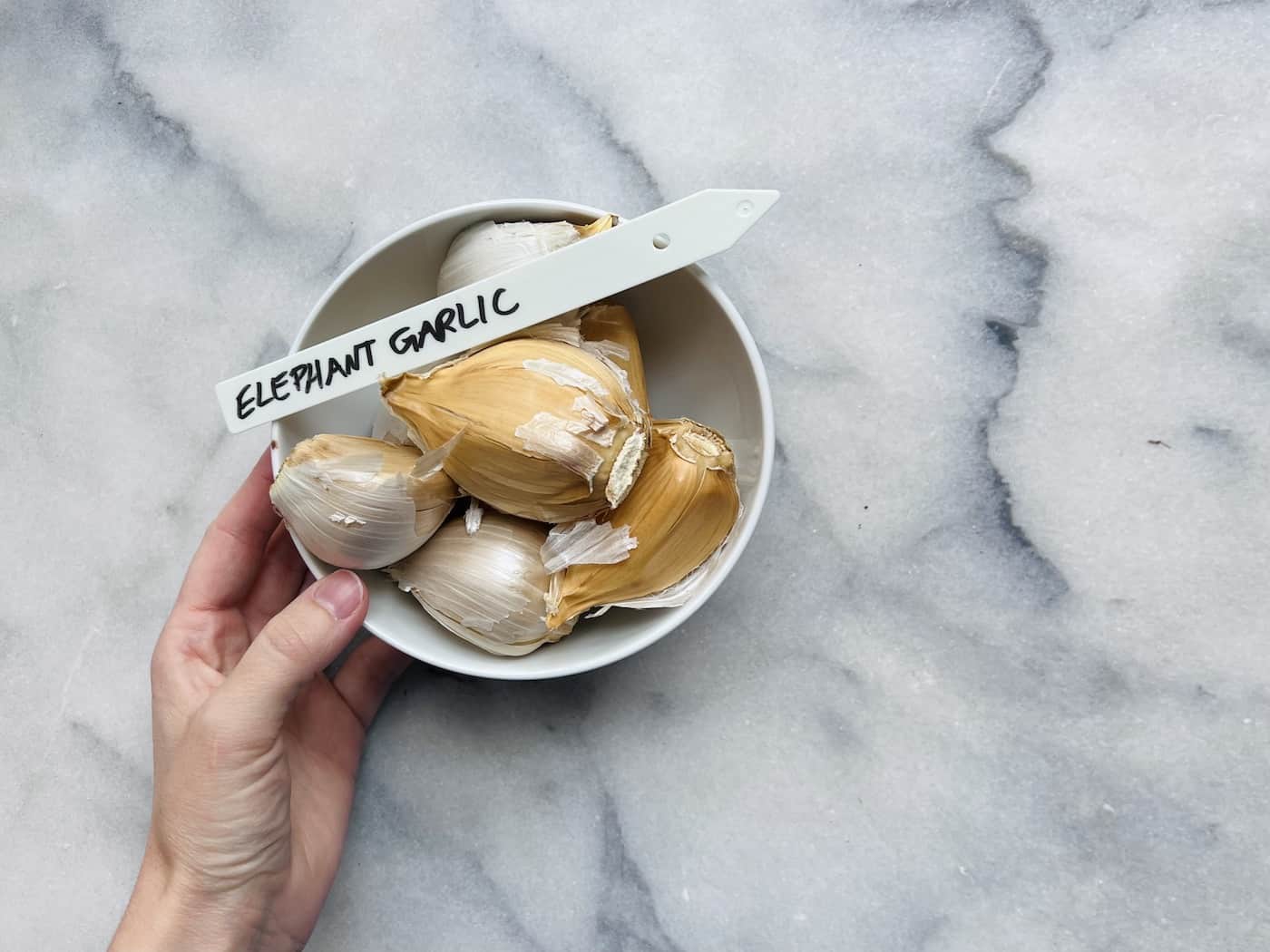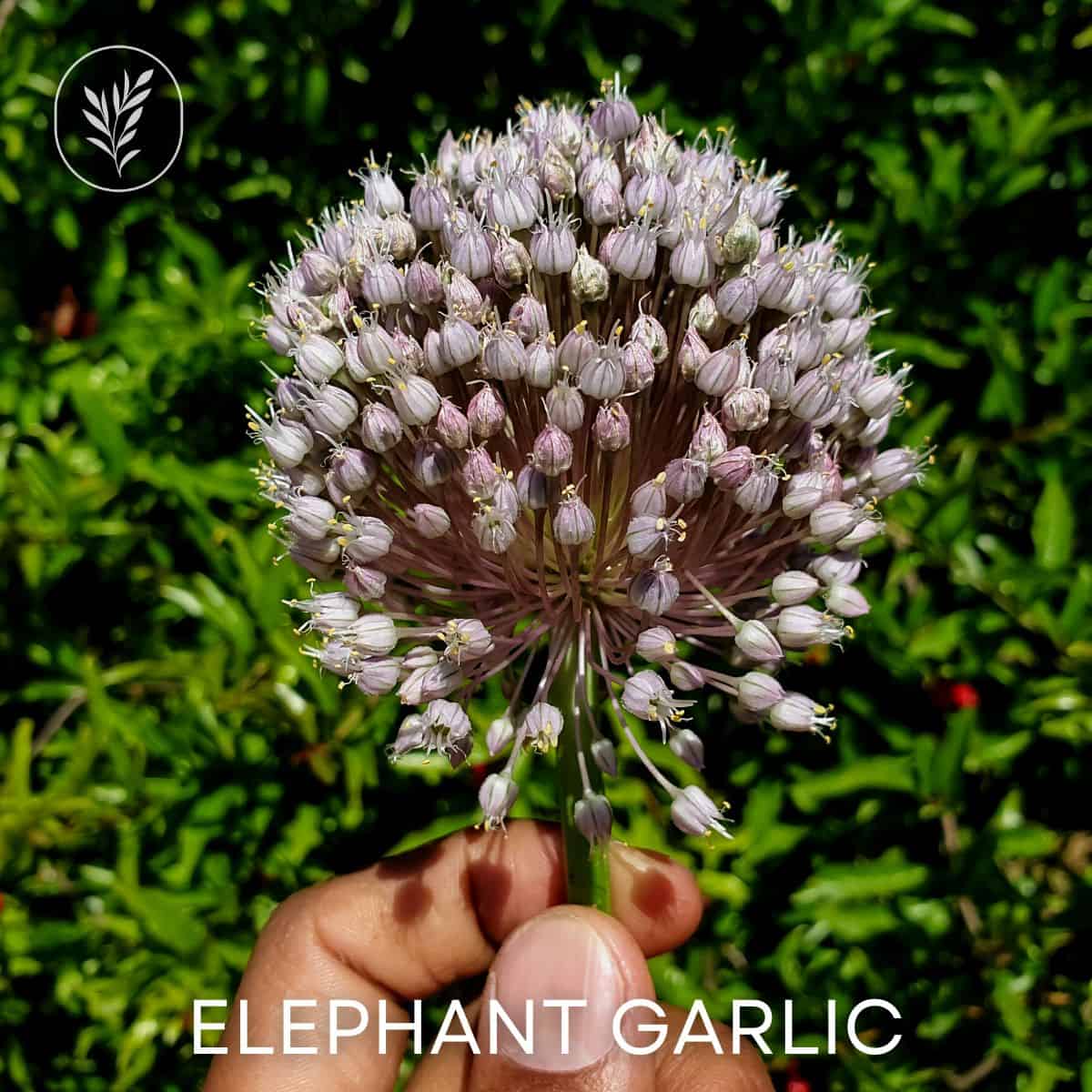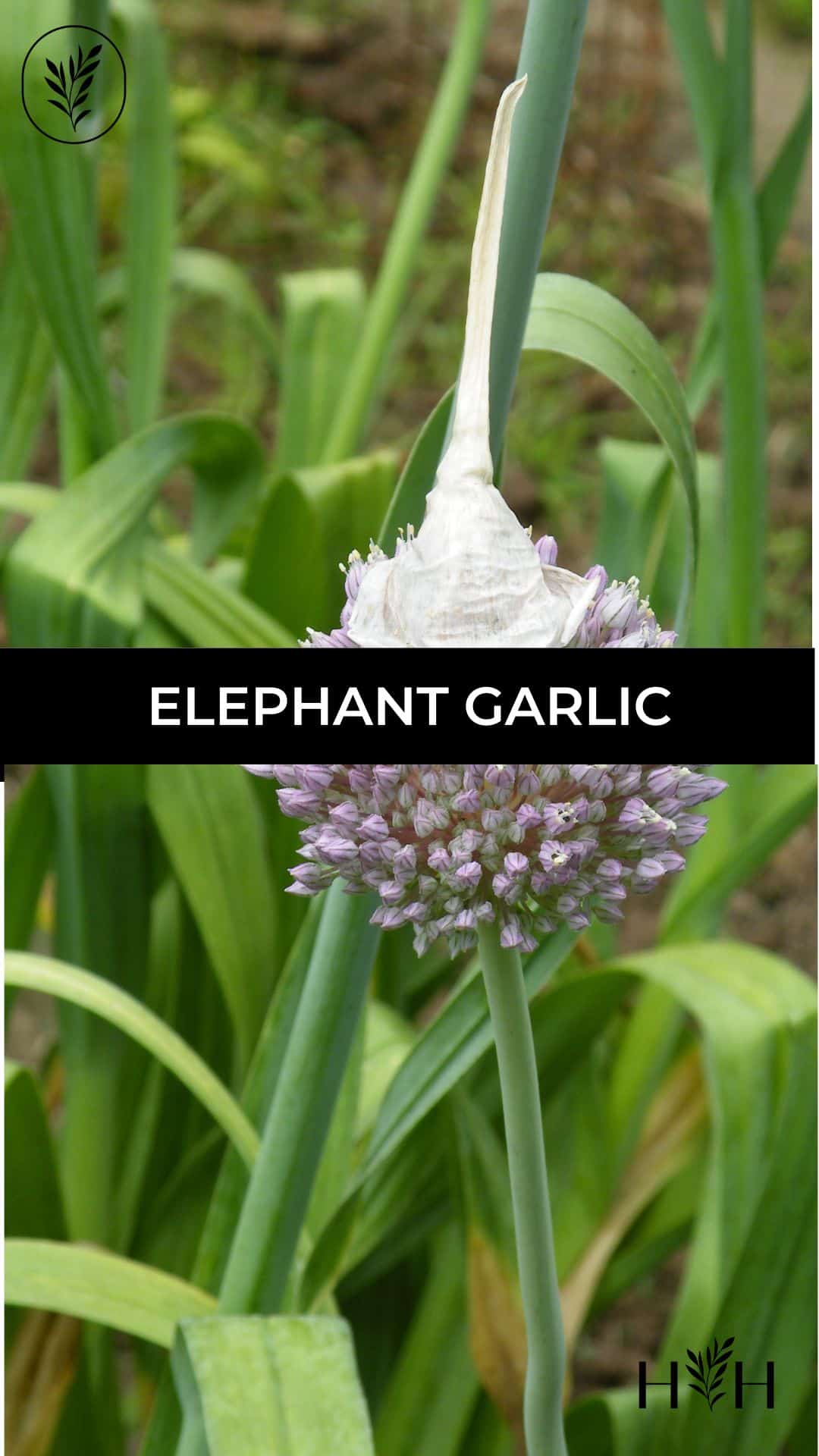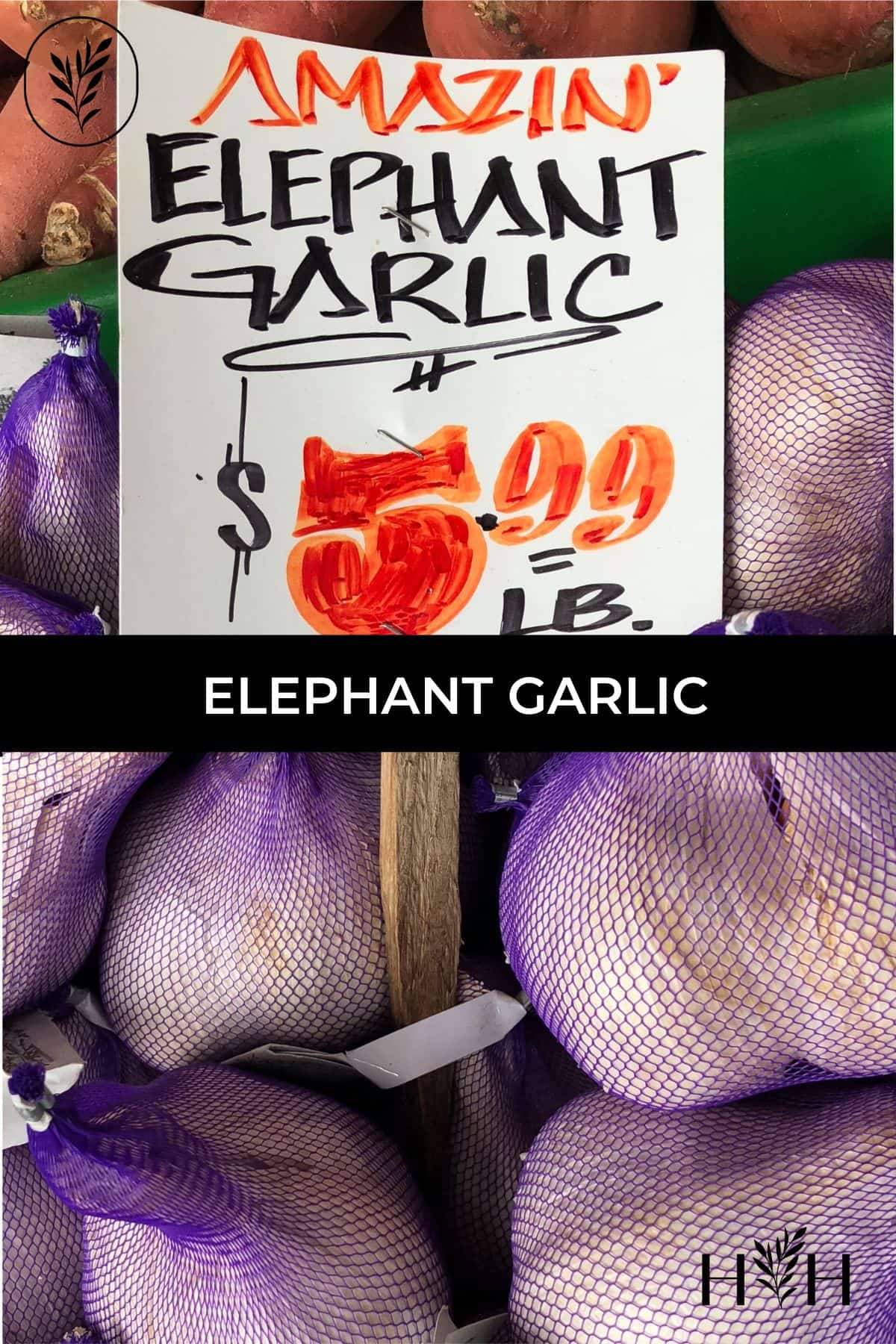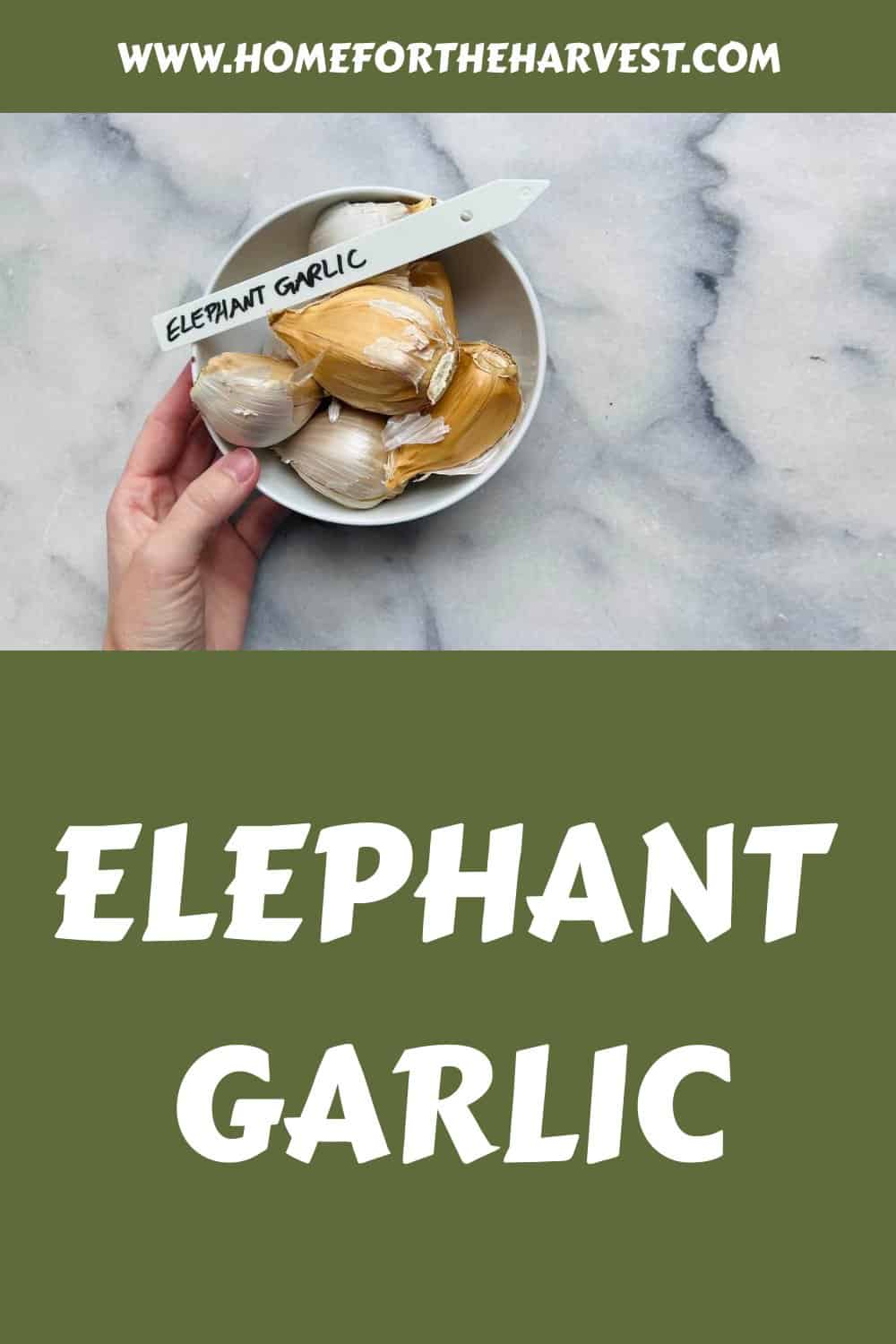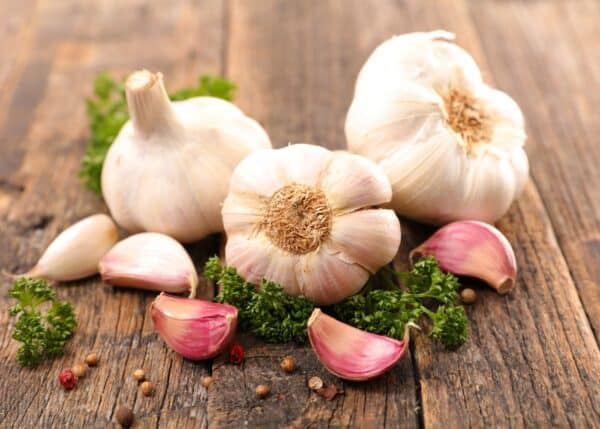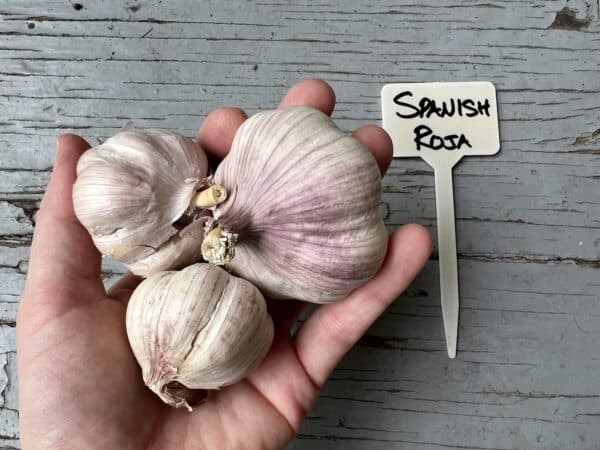Have you come across elephant garlic at the local market? This fun allium looks like a jumbo bulb of garlic and has a milder taste.
Elephant garlic (Allium ampeloprasum) is a unique and versatile plant that offers both visual appeal in the garden and culinary versatility in the kitchen. With its large cloves, mild flavor, and easy-to-grow nature, it’s no wonder that more and more homeowners are looking to add this alluring allium to their gardens.
In this guide, we’ll provide the essential knowledge and techniques needed to successfully grow elephant garlic in your home garden. From planting tips for spring-planted or fall-planted bulbs to proper care throughout the growing season, our expert advice will ensure your success with this flavorful favorite.
Additionally, we’ll cover harvesting techniques that yield optimal results while preserving the quality of your elephant garlic crop. Finally, learn how best to store these impressive bulbs for long-lasting enjoyment as well as some delicious ways to incorporate them into your cooking repertoire.
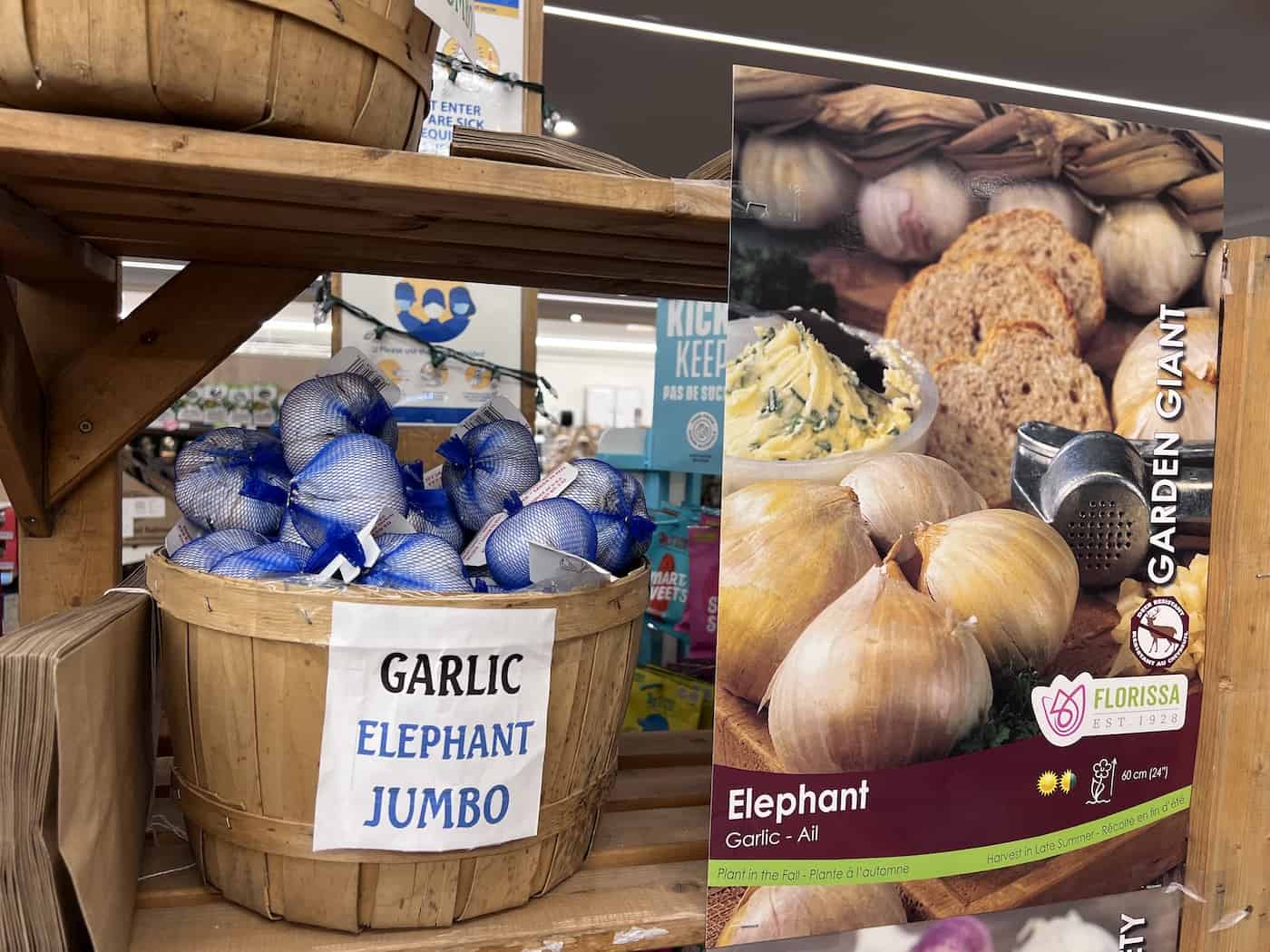
Introduction to elephant garlic
Elephant garlic is a type of allium grown for its attractive purple flowers and jumbo mild-tasting bulbs. The botanical name for elephant garlic is Allium ampeloprasum. This species is native to areas in the Mediterranean, the Middle East, and western Asia.
Elephant garlic is of a different species than “true” garlic. Culinary garlic varieties are of Allium sativum, native to regions of Iran and central Asia. Elephant garlic, Allium ampeloprasum, is more closely related to other alliums like the leek than to conventional garlic.
Elephant garlic is known for its enormous bulbs. Each mature bulb usually contains only four giant cloves, and young bulbs may not yet be separated into segmented cloves. The plants also have nice purple globular flowers, similar to ornamental alliums in the flower garden. Elephant garlic plants grow best with a long, warm spring and summer growing season.

How to plant and grow elephant garlic
With its milder flavor and large cloves, elephant garlic is an excellent addition to the home garden. Follow these simple steps to plant and grow your own bountiful crop of this tasty treat.
Selecting seed garlic bulbs
To start, you’ll need healthy elephant garlic bulbs. Look for firm bulbs with no signs of mold or damage. Keep in mind that unlike regular garlic, which has multiple separate cloves within each bulb, elephant garlic often features a single clove or just a few large cloves.
Choosing a growing location
Elephant garlic thrives in full sun and well-draining soil rich in organic matter. Choose a location that receives at least 6 hours of sunlight per day and amend the soil with compost if needed.
When to plant elephant garlic
The most popular months for planting elephant garlic are September and October (in North America). Elephant garlic is best planted in the fall but can also be planted in early spring. You can even plant it later in the spring; just be aware that the bulbs likely won’t be very big at harvest time.
- Fall-planted: For larger bulbs and more robust growth, it’s best to plant elephant garlic in the fall – about four weeks before your area’s first hard frost date.
- Spring-planted: If you missed planting time during fall or prefer spring planting due to climate conditions, don’t worry. You can still grow elephant garlic by planting it when the ground thaws out after winter frosts have passed. However, expect slightly smaller yields from spring-planted crops than their fall counterparts.
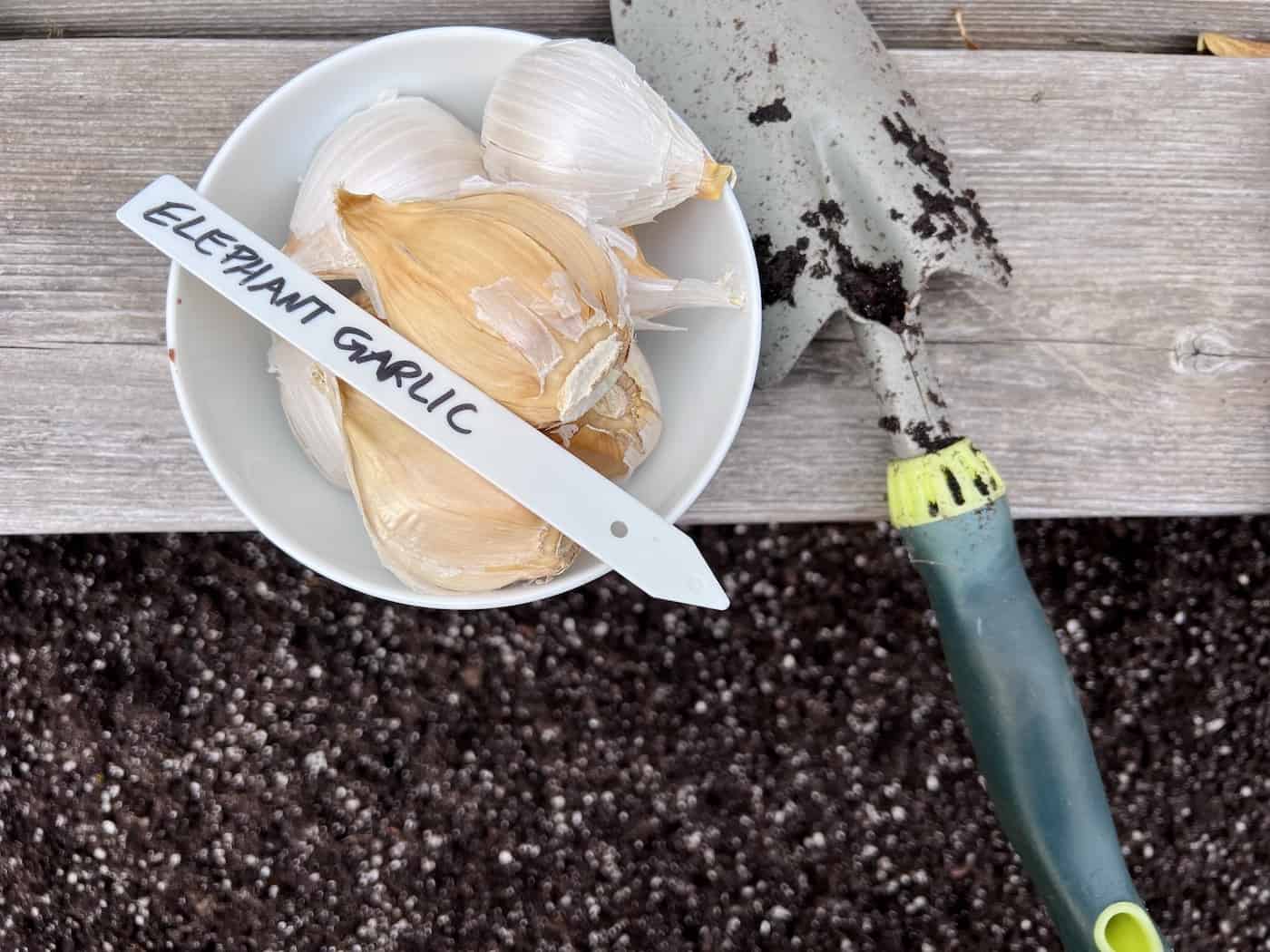
Planting elephant garlic cloves
To plant elephant garlic, follow these simple steps:
- Separate each bulb up into individual cloves. Some elephant garlic bulbs may only contain a single big clove (and that’s ok, too – you can plant the whole thing).
- Dig a hole about 6-8 inches deep that’s also wide enough to accommodate the clove.
- Place the clove in the hole with its pointed end facing up.
- Cover the clove with 4-6 inches of soil and gently firm it down.
- If you’re planting multiple cloves, space them at least 6-8 inches apart.
- Water thoroughly after planting to help settle the soil around your new crop of elephant garlic.
Mulching planted garlic
To ensure optimal growth and protect your plants from harsh weather conditions or pests, apply a layer of mulch (such as straw or shredded leaves) over the soil in the entire planted area. This will also help retain moisture in the soil during dry periods and provide a buffer against freeze-thaw.
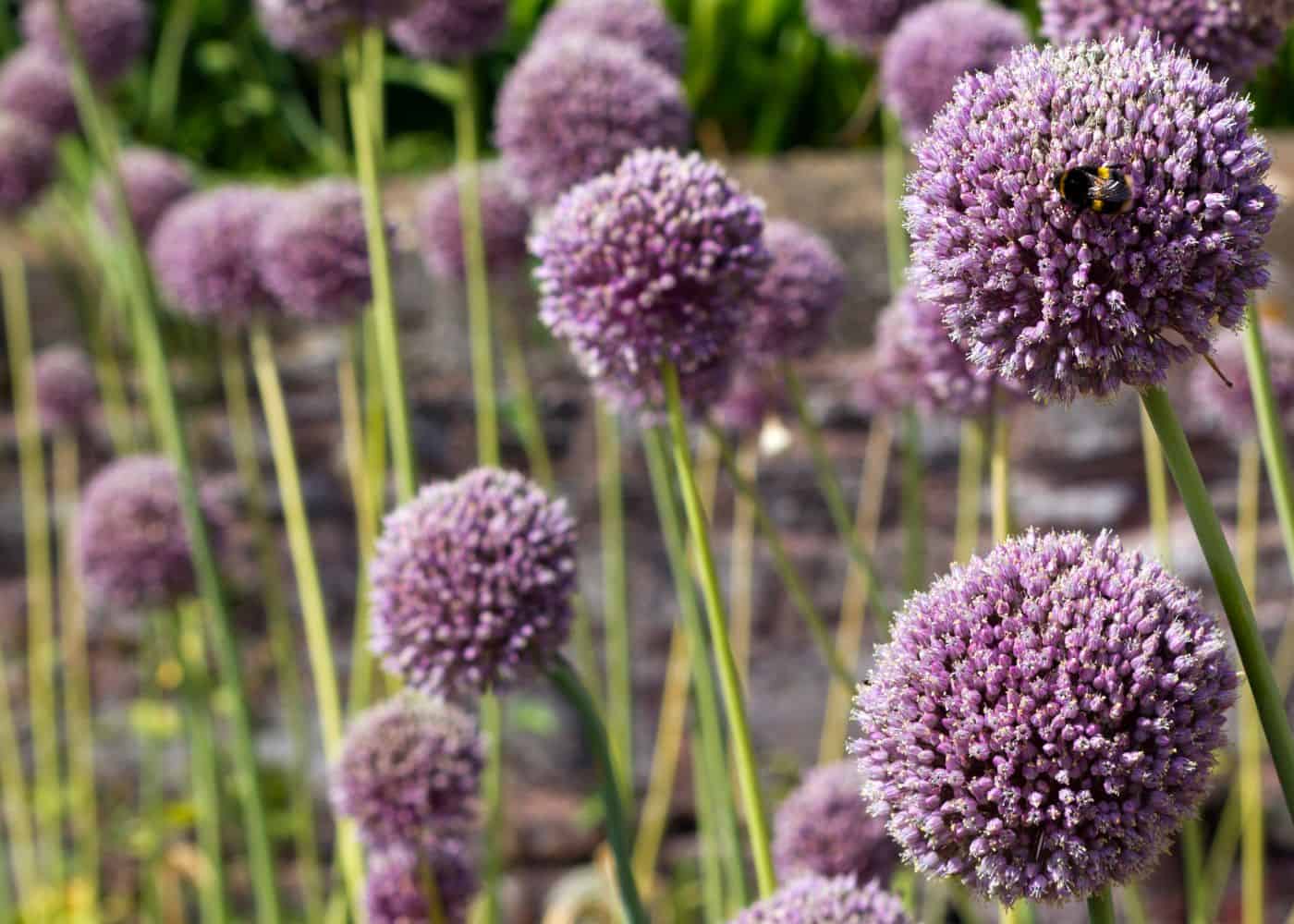
Harvesting elephant garlic
Harvesting elephant garlic at the right time is crucial for obtaining maximum flavor and nutrition from your garden. This section will discuss when to harvest your elephant garlic and how to do it properly.
When to harvest elephant garlic
The best time to harvest elephant garlic depends on whether you planted fall or spring plants. For fall-sown varieties, it is usually best to harvest in the mid-to-late summertime; spring plantings should be ready for picking by the end of summer or the beginning of autumn.
To determine if your elephant garlic is ready for harvest, look for signs such as yellowing leaves and a drooping flower stalk. When about half of the leaves have turned yellow and begun to wilt, it’s time to start harvesting.
How to harvest elephant garlic bulbs
Here are the basic steps for harvesting elephant garlic:
- Gather your tools: To begin harvesting your allium ampeloprasum, you’ll need a spade or garden fork and gloves.
- Carefully loosen soil: Insert the spade or fork into the soil about six inches away from the base of each plant. Gently pry up around each bulb without cutting into them.
- Pull up the bulbs: Grasp each plant near its base with gloved hands and gently pull upwards until the entire bulb is free from the soil.
- Shake off excess soil: Gently shake each harvested elephant garlic bulb to remove any excess soil, being careful not to damage the large cloves or roots.
- Cure the bulbs: To ensure long-lasting freshness and a milder taste, cure your freshly-harvested elephant garlic by laying it out in a single layer on newspaper or wire racks. Lay the bulbs out in a dry, airy spot with plenty of sunlight for around two weeks.
By following these steps, you’ll be able to enjoy delicious homegrown elephant garlic that’s packed with flavor and nutrients. Don’t forget to save some of your largest cloves for replanting next season.
Tips for maximizing elephant garlic yield
Here are some ways you can increase your yield in terms of pounds of elephant garlic:
- When planting, maintain proper spacing between plants (at least six inches apart) to allow bulbs enough room to grow into their full size.
- Fertilize your garden bed with organic compost before planting and during the growth stages. This will provide essential nutrients for optimal growth and yield of both true garlic varieties and their larger cousins, like elephant garlic.
- Irrigate consistently throughout the growing season but avoid overwatering, which can lead to rotting bulbs. A good rule of thumb is one inch of water per week either through rainfall or supplemental irrigation methods such as drip systems or soaker hoses.
Incorporating these tips into your gardening routine will help ensure a bountiful harvest of flavorful elephant garlic that you can enjoy all year round.
Harvesting elephant garlic is a relatively simple process that requires minimal effort and can be done by anyone. Preserving the garlic correctly is critical to maintain its freshness for later use.
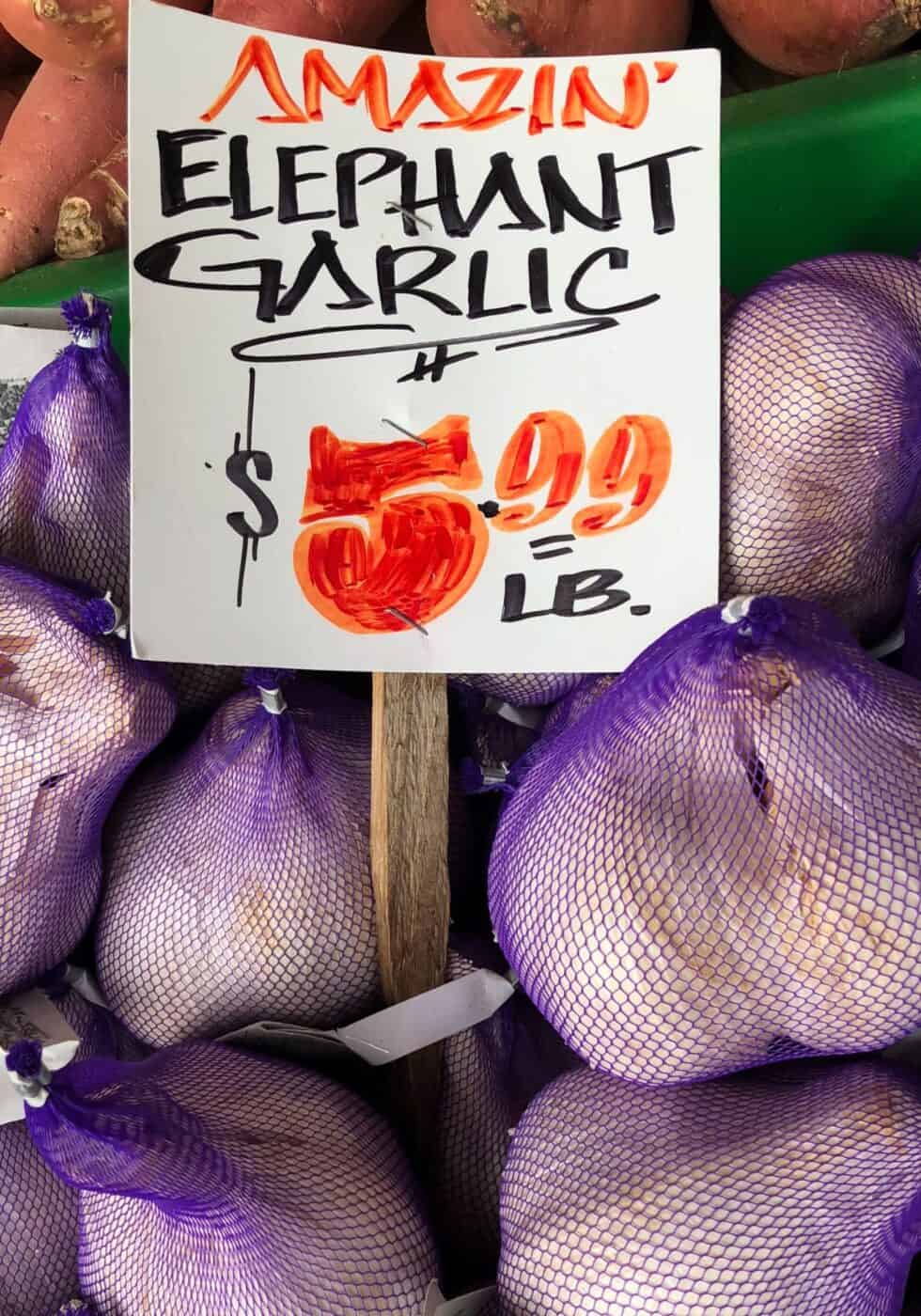
Storing elephant garlic
Once you’ve successfully harvested your elephant garlic, it’s essential to store it properly to stay fresh and flavorful for as long as possible. In this section, we’ll cover the best methods for storing elephant garlic and how to make the most of its milder taste in your kitchen.
Curing elephant garlic
The first step in storing elephant garlic is curing it after harvest. This process helps preserve the large cloves by allowing them to dry out slightly, which prevents rot and extends their shelf life. To cure your elephant garlic:
- Gently brush off any dirt from the bulbs without washing them.
- Position the bulbs on a level table or suspend them in an airy region away from direct sunlight.
- Allow the bulbs to cure for about two weeks until their outer skins become papery and dry.
Proper long-term storage conditions
To keep your cured elephant garlic fresh, you need to provide optimal storage conditions that maintain its quality over time:
- Temperature: Store your cured elephant garlic at temperatures between 50°F (10°C) and 60°F (15°C). Avoid exposing them to freezing temperatures or extreme heat.
- Humidity: Maintain humidity levels around 60% -70%. Too much moisture can cause mold growth, while too little may lead to the dehydration of cloves.
- Air circulation: Good air circulation prevents mold growth on stored elephant garlic bulbs. Use mesh bags, open-weave baskets, or slatted crates to store your bulbs.
- Darkness: Keep your elephant garlic in a dark place, as exposure to light can cause it to sprout prematurely. A pantry, cupboard, or closet works well for this purpose.
Checking on stored elephant garlic
Regularly inspect your stored elephant garlic bulbs for any signs of rot or mold growth. If you find any affected cloves, remove them immediately and discard them properly to prevent the spread of contamination. In addition, keep an eye out for sprouting – if you notice that some of your stored bulbs are starting to grow green shoots, it’s time to use them in cooking or plant them in the garden again.
By following these storage tips and guidelines, you’ll enjoy the milder flavor of elephant garlic throughout the year while ensuring its freshness and quality. Don’t forget that proper harvesting techniques play a significant role in how long your garlic will last when stored correctly.
Cooking with elephant garlic
If you’re looking for a milder flavor in your dishes, elephant garlic is the perfect ingredient to experiment with. Its large cloves and unique taste add a delightful twist to traditional garlic recipes. Let’s explore some creative ways to use this versatile allium ampeloprasum in your kitchen.
Roasted elephant garlic
Roasting elephant garlic brings out its natural sweetness while softening its texture, making it an excellent addition to various dishes or spread on warm crusty bread. To roast elephant garlic:
- Set your oven to 400°F (200°C) before cutting the bulb and drizzling it with olive oil.
- Cut off the top of the bulb, exposing the individual cloves.
- Drizzle olive oil over the exposed cloves and wrap them in aluminum foil.
- Bake for approximately 40-45 minutes until tender and golden brown.
Elephant garlic pesto
Add a new dimension of flavor to classic pesto by using roasted elephant garlic instead of regular garlic. This delicious variation can be used as a pasta sauce, sandwich spread, or even as a topping for grilled vegetables. Try this tasty recipe here.
Mashed Potatoes with Elephant Garlic
Elevate your mashed potatoes game by adding creamy roasted elephant garlic. The milder taste complements perfectly with buttery potatoes creating an unforgettable side dish that will leave everyone asking for seconds.
FAQs about elephant garlic
What is special about elephant garlic?
Elephant garlic is unique due to its large size, mild flavor, and ease of cultivation. It’s actually a type of leek rather than true garlic but shares similar growing conditions and culinary uses. Its milder taste makes it versatile in recipes where regular garlic might be overpowering.
Is elephant garlic as good as regular garlic?
Elephant garlic has a mild taste in comparison to regular garlic. This may be a benefit or a drawback, depending on the audience. The milder flavor of elephant garlic works well in various dishes without being too strong, while regular garlic offers a more pungent taste for those who prefer it.
Is elephant garlic genetically modified?
No, elephant garlic is not genetically modified (GM). It’s simply a different species of Allium that grows larger cloves than regular garlic. Like any other plant cultivar or variety, selective breeding over time led to its distinct characteristics, such as size and mildness.
Before you go…
Growing elephant garlic is a great way to add variety to your garden and cooking. Whether you plant in the spring or fall, allium ampeloprasum has larger cloves than regular garlic and a milder taste, perfect for those who want something less pungent.
When planting elephant garlic, it’s important to ensure it gets plenty of full sun and well-draining soil. Plant the bulbs with the pointed end facing up, and space them about 6 inches apart. You should see sprouts emerging from the soil with proper elephant garlic care within a few weeks.


